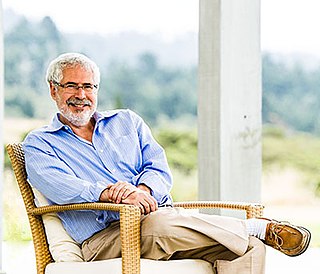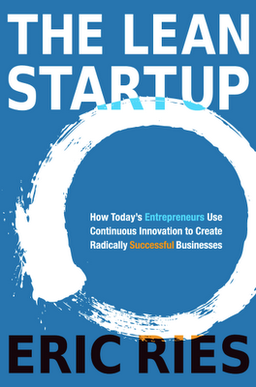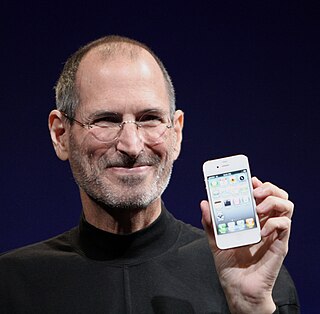Related Research Articles

Marc Lowell Andreessen is an American businessman and software engineer. He is the co-author of Mosaic, the first widely used web browser with a graphical user interface; co-founder of Netscape; and co-founder and general partner of Silicon Valley venture capital firm Andreessen Horowitz. He co-founded and later sold the software company Opsware to Hewlett-Packard. Andreessen is also a co-founder of Ning, a company that provides a platform for social networking websites and an inductee in the World Wide Web Hall of Fame. Andreessen's net-worth is estimated at $1.7 billion. Critics of Andreessen allege he displayed a conflict of interest by effectively negotiating against Facebook shareholders.

Steve Blank is an American entrepreneur, educator, author and speaker based in Pescadero, California.

Chris Dixon is an American internet entrepreneur and investor. He is a general partner at the venture capital firm Andreessen Horowitz, and previously worked at eBay. He is also the co-founder and former CEO of Hunch. He was #1 on the Midas List in 2022. Dixon is known as a cryptocurrency and Web3 evangelist.
A minimum viable product (MVP) is a version of a product with just enough features to be usable by early customers who can then provide feedback for future product development.

Benjamin Abraham Horowitz is an American businessman, investor, blogger, and author. He is a technology entrepreneur and co-founder of the venture capital firm Andreessen Horowitz along with Marc Andreessen. He previously co-founded and served as president and chief executive officer of the enterprise software company Opsware, which Hewlett-Packard acquired in 2007. Horowitz is the author of The Hard Thing About Hard Things: Building a Business When There Are No Easy Answers, a book about startups, and What You Do Is Who You Are: How to Create Your Business Culture.
Lean startup is a methodology for developing businesses and products that aims to shorten product development cycles and rapidly discover if a proposed business model is viable; this is achieved by adopting a combination of business-hypothesis-driven experimentation, iterative product releases, and validated learning. Lean startup emphasizes customer feedback over intuition and flexibility over planning. This methodology enables recovery from failures more often than traditional ways of product development.
Andreessen Horowitz is a private American venture capital firm, founded in 2009 by Marc Andreessen and Ben Horowitz. The company is headquartered in Menlo Park, California. As of April 2023, Andreessen Horowitz ranks first on the list of venture capital firms by assets under management.
Actifio was a privately held information technology firm headquartered in Waltham, Massachusetts. The company specialised in copy data virtualization for making information technology infrastructure more efficient by reducing unnecessary duplication of data. On December 3, 2020, Google announced it intended to acquire Actifio for an undisclosed sum. The acquisition closed on Monday Dec 14, 2020.

Eric Ries is an American entrepreneur, blogger, and author of The Lean Startup, a book on the lean startup movement. He is also the author of The Startup Way, a book on modern entrepreneurial management.
Outcome-Driven Innovation (ODI) is a strategy and innovation process developed by Anthony W. Ulwick. It is built around the theory that people buy products and services to get jobs done. As people complete these jobs, they have certain measurable outcomes that they are attempting to achieve. It links a company's value creation activities to customer-defined metrics.

The Lean Startup: How Today's Entrepreneurs Use Continuous Innovation to Create Radically Successful Businesses is a book by Eric Ries describing his proposed lean startup strategy for startup companies.
ItsOn was an American software company based in Redwood City, California that developed cloud computing software for enhancing the performance of mobile networks. ItsOn's software platform gave mobile network operators the ability to offer granular and flexible, user-customizable services. Users could select and change mobile voice, text, and data services, as well as manage devices, plan sharing and permissions, directly from smart devices at any time.
Homejoy was an online platform which connected customers with home service providers, including house cleaners and handymen. The company was based in San Francisco. Homejoy served the United States, Canada, and United Kingdom for a total of over 31 major cities. It charged a variable rate of $25–$35 per hour .. Homejoy shut down on July 31, 2015.
Earnest is a technology-enabled fintech lender headquartered in San Francisco, California that offers education financing products, including student loan refinancing and private student loans. The company evaluates a person’s full education, employment, and financial profile, in addition to their credit score in order to obtain a complete financial profile of each applicant. This type of credit is referred to as "merit-based lending."

Wealthfront Inc. is an automated investment service firm based in Palo Alto, California, founded by Andy Rachleff and Dan Carroll in 2008. As of November 2023, Wealthfront had $50 billion AUM across 700,000 accounts.
Mixpanel is an event analytics service company that tracks user interactions with web and mobile applications.
Instabase is a technology company headquartered in San Francisco. The company provides an Applied AI platform that can be used to understand any content such as documents, files, databases, etc., and build workflows to automate business processes.
Customer development is a formal methodology for building startups and new corporate ventures. It is one of the three parts that make up a lean startup.

A unicorn bubble is a theoretical economic bubble that would occur when unicorn startup companies are overvalued by venture capitalists or investors. This can either occur during the private phase of these unicorn companies, or in an initial public offering. A unicorn company is a startup company valued at, or above, $1 billion US dollars.

Second product syndrome is a business concept introduced by Steve Jobs in the documentary The Pixar Story. Steve Jobs describes the concept as when the company comes up with a very successful first product, it becomes more ambitious and boastful. The company then decides to go ahead with the second product without actually investigating and understanding the reason behind their first product's success. Therefore, the second product often ends up as a failure.
References
- ↑ "How to find product market fit: the counterintuitive secrets". www.unusual.vc. Retrieved 2023-06-27.
- ↑ "Andy Rachleff on "How to Know If You've Got Product Market Fit"" . Retrieved 24 September 2020.
- ↑ Andy Rachleff on coining the term product-market fit, 2022-10-31, event occurs at 3:58, retrieved 2022-11-08
- ↑ Andreesen, Marc. "Part 4: The only thing that matters". Pmarchive. Retrieved 24 September 2020.
- ↑ Griffen, Tren. "12 Things about Product-Market Fit". Andreessen Horowitz. Retrieved 24 September 2020.
- ↑ Andreesen, Marc. "Product/Market Fit - EE204". Stanford University. Retrieved 6 December 2018.
- ↑ Kenny McQuarrie. "Evaluating Product-Market-Fit".
- ↑ Steve Blank. "The Four Step to the Epiphany - 2006" (PDF).
- ↑ Blank, Steve and Dorf, Bob (2012). The Startup Owner's Manual, K&S Ranch (publishers), ISBN 978-0984999309
- ↑ Blank, Steve (May 2013). Why the Lean Start-Up Changes Everything, in Harvard Business Review
- ↑ "How to find product market fit: the counterintuitive secrets". www.unusual.vc. Retrieved 2023-06-27.
- ↑ Andy Rachleff from VC to Entrepreneur, 2023-03-22, retrieved 2023-06-27